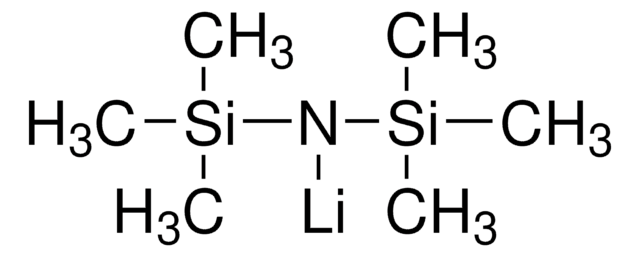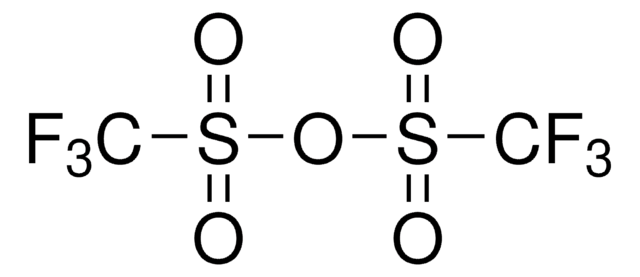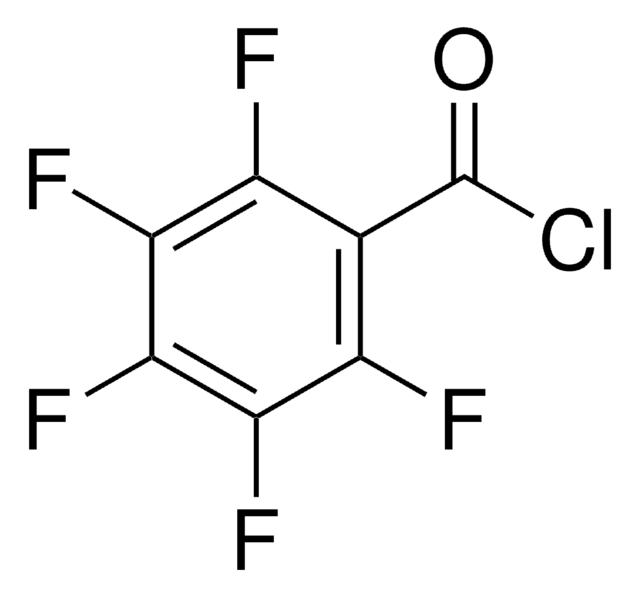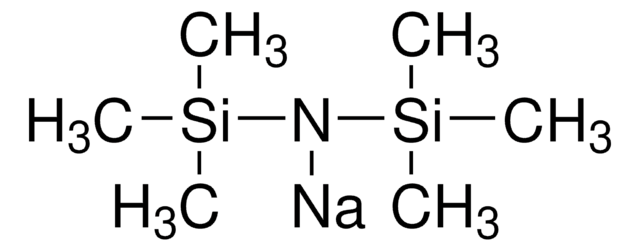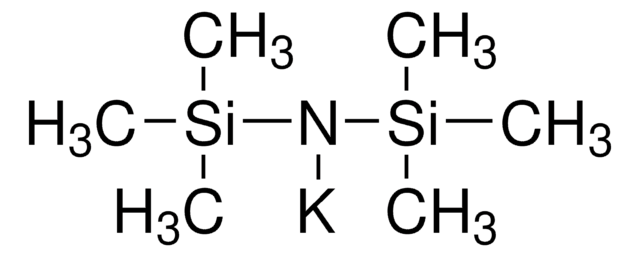Kluczowe dokumenty
225770
Lithium bis(trimethylsilyl)amide solution
1.0 M in THF
Synonim(y):
Hexamethyldisilazane lithium salt
About This Item
Polecane produkty
Formularz
liquid
Poziom jakości
stężenie
1.0 M in THF
gęstość
0.891 g/mL at 25 °C
ciąg SMILES
[Li]N([Si](C)(C)C)[Si](C)(C)C
InChI
1S/C6H18NSi2.Li/c1-8(2,3)7-9(4,5)6;/h1-6H3;/q-1;+1
Klucz InChI
YNESATAKKCNGOF-UHFFFAOYSA-N
Szukasz podobnych produktów? Odwiedź Przewodnik dotyczący porównywania produktów
Opis ogólny
Zastosowanie
- To catalyze polymerization reaction in the synthesis of poly(p-benzamide)s.
- In the synthesis of cyclic poly(α-peptoid)s and α-(difluoromethyl)styrene.
- In directed aldol condensations and Darzens condensation reactions; α-arylation of aryl ester derivatives and allylic amination reaction.
- For the generation of kinetic enolates than sodium hexamethyldisilazide (NaHMDS) because the enolates produced are more regiostable than those produced with NaHMDS.
Opakowanie
Informacje prawne
polecane
Hasło ostrzegawcze
Danger
Zwroty wskazujące rodzaj zagrożenia
Zwroty wskazujące środki ostrożności
Klasyfikacja zagrożeń
Carc. 2 - Eye Dam. 1 - Flam. Liq. 2 - Skin Corr. 1B - STOT SE 3
Organy docelowe
Central nervous system, Respiratory system
Zagrożenia dodatkowe
Kod klasy składowania
3 - Flammable liquids
Klasa zagrożenia wodnego (WGK)
WGK 2
Temperatura zapłonu (°F)
1.4 °F - closed cup
Temperatura zapłonu (°C)
-17 °C - closed cup
Wybierz jedną z najnowszych wersji:
Masz już ten produkt?
Dokumenty związane z niedawno zakupionymi produktami zostały zamieszczone w Bibliotece dokumentów.
Klienci oglądali również te produkty
Nasz zespół naukowców ma doświadczenie we wszystkich obszarach badań, w tym w naukach przyrodniczych, materiałoznawstwie, syntezie chemicznej, chromatografii, analityce i wielu innych dziedzinach.
Skontaktuj się z zespołem ds. pomocy technicznej